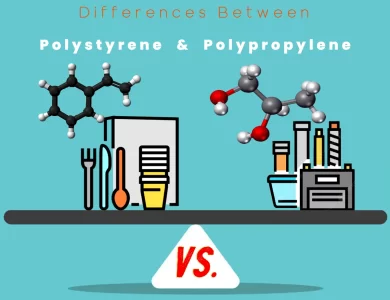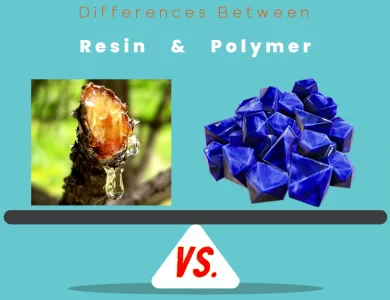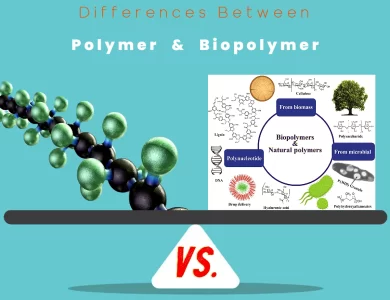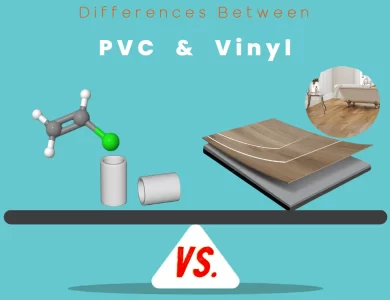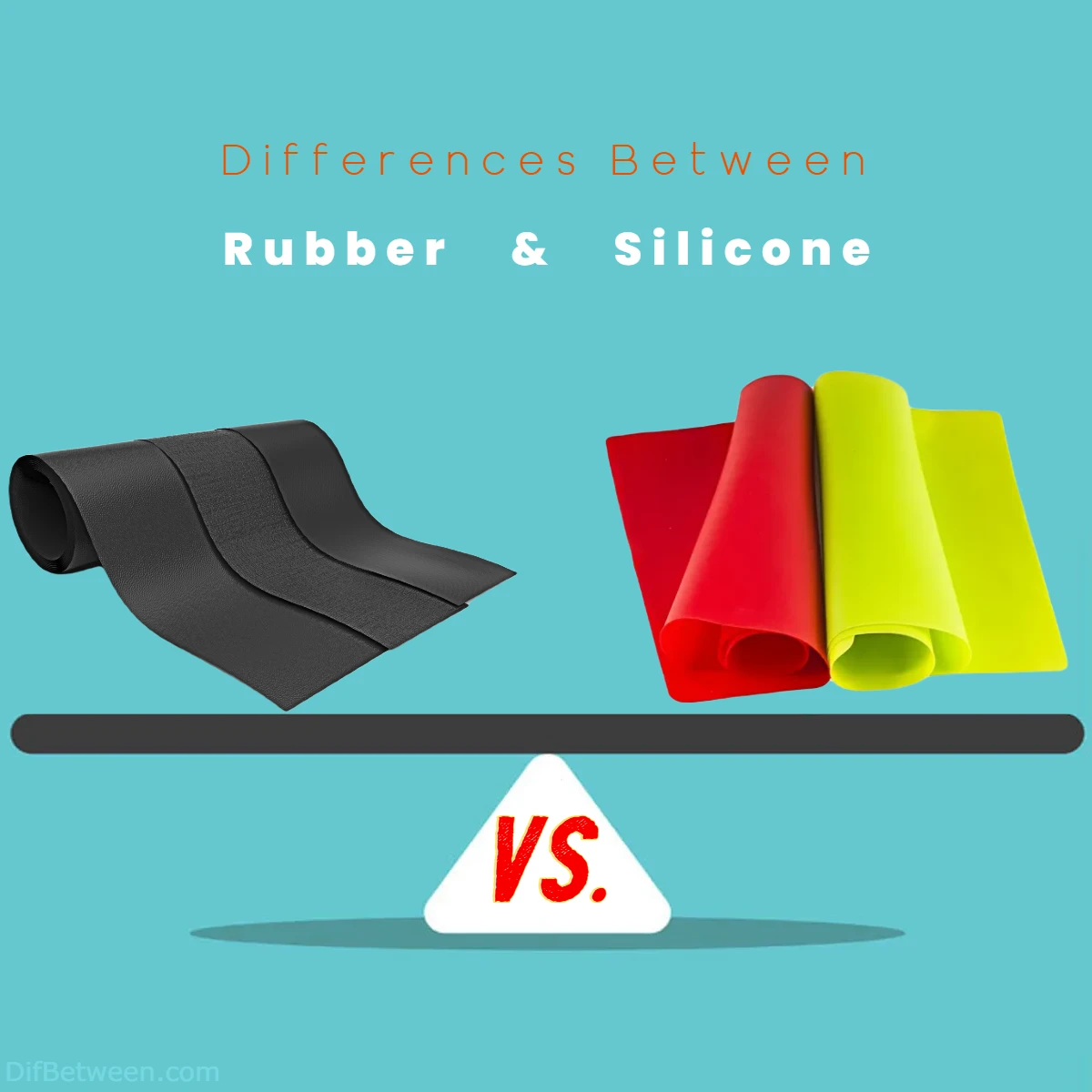
| Aspect | Rubber | Silicone |
|---|---|---|
| Source | Natural (latex) and synthetic | Synthetic |
| Chemical Composition | Linear chains (natural and synthetic types) | Silicon-oxygen backbone with organic side groups |
| Heat Resistance | Lower heat resistance compared to silicone | Exceptional heat resistance |
| Flexibility | Highly flexible and resilient | Flexible across a wide temperature range |
| Abrasion Resistance | Strong resistance to abrasion | Generally good abrasion resistance |
| Tear Resistance | Varies depending on type | Impressive tear resistance |
| Chemical Resistance | Varies depending on type | Broad resistance to many chemicals |
| Water Resistance | Resistant; can absorb water | Highly hydrophobic; excellent water resistance |
| Electrical Insulation | Effective in certain applications | Excellent electrical insulation |
| Environmental Impact | Varies; natural rubber is renewable | Energy-intensive production |
| Flexibility in Temperature Range | Good across moderate temperatures | Maintains flexibility across wide temperature range |
| Cost | Generally more cost-effective | Higher cost due to premium properties |
| Applications | Tires, seals, gaskets, hoses, roofing | Electronics, medical devices, bakeware, aerospace, automotive, and more |
| Elasticity and Damping | Excellent for shock absorption | Notable damping properties |
| High-Temperature Performance | Limited due to heat sensitivity | Exceptional heat resistance |
| Versatility | Moderate versatility | High versatility across applications |
| Biocompatibility | Varies based on rubber type | Excellent; widely used in medical devices |
Imagine you’re standing at a crossroads, faced with a pivotal decision: the choice between rubber and silicone. These two remarkable materials, each with its own set of unique attributes, are like puzzle pieces waiting to fit perfectly into your projects. rubber, with its elasticity and familiarity, stands tall as a reliable companion for countless applications, while silicone, armed with its heat-resistant armor and versatility, is ready to conquer new frontiers.
Differences Between Rubber and Silicone
The main differences between rubber and silicone lie in their composition and properties. Rubber, derived from natural or synthetic sources, offers flexibility and resilience, making it suitable for applications requiring stretchability and impact resistance. In contrast, silicone, a synthetic polymer with a silicon-oxygen backbone, excels in extreme heat resistance, maintaining its properties across a wide temperature range. While rubber is known for its abrasion resistance and familiarity, silicone boasts remarkable versatility and compatibility with diverse chemicals. Whether you’re considering heat resistance, flexibility, or specific application needs, understanding these disparities empowers you to choose the material that aligns best with your requirements.
Physical Characteristics
Rubber: Flexibility and Resilience
Rubber is a widely used elastomer known for its impressive flexibility and resilience. It is derived from natural sources, like latex from rubber trees, or can be synthesized through processes involving petrochemicals. Natural rubber, often referred to as polyisoprene, exhibits excellent elasticity, making it ideal for applications that require stretchability and resistance to wear. Additionally, rubber boasts strong resistance to abrasion and impact, which contributes to its durability in various environments.
Silicone: Heat Resistance and Versatility
Silicone, on the other hand, is a synthetic polymer made up of silicon, oxygen, carbon, and hydrogen. One of the standout features of silicone is its exceptional heat resistance. It can withstand high temperatures without losing its physical properties, which makes it suitable for applications in extreme conditions. This attribute also makes silicone a preferred choice in the production of cooking utensils, bakeware, and various automotive components. Apart from its heat resistance, silicone offers remarkable versatility, as it maintains its properties across a wide range of temperatures. It remains flexible and functional even in cold environments, which extends its usability.
When comparing the physical characteristics of rubber and silicone, it’s important to note that both materials exhibit varying degrees of hardness. Rubber can range from soft and pliable to hard and rigid, depending on the specific formulation and additives used during manufacturing. Silicone, too, can be customized in terms of hardness, allowing manufacturers to tailor it to different applications. The following table summarizes the key physical differences between rubber and silicone:
| Physical Characteristics | Rubber | Silicone |
|---|---|---|
| Flexibility | Highly flexible and resilient | Flexible across a wide temperature range |
| Heat Resistance | Lower heat resistance compared to silicone | Exceptional heat resistance |
| Hardness Range | Various hardness levels achievable | Can be customized for different hardness levels |
| Abrasion Resistance | Strong resistance to abrasion | Generally good abrasion resistance |
Chemical Composition and Properties
Rubber: Natural and Synthetic Variants
Rubber, in its natural form, is derived from the latex sap of rubber trees. This natural rubber, or polyisoprene, has a linear molecular structure that contributes to its elastic properties. Synthetic rubber, on the other hand, is created through polymerization processes, resulting in a variety of rubber types with distinct characteristics. Common synthetic rubber types include neoprene, nitrile rubber, and styrene-butadiene rubber (SBR), each tailored for specific applications.
Silicone: Silicon-Oxygen Backbone
Silicone stands apart from rubber due to its unique chemical structure. It features a silicon-oxygen backbone, which imparts exceptional stability and resistance to extreme temperatures. This backbone is interspersed with organic groups that determine the material’s specific properties. The presence of silicon gives silicone its remarkable heat resistance, while the organic side groups contribute to its flexibility and compatibility with various substances.
Both rubber and silicone exhibit resistance to water, but silicone takes this property a step further by being hydrophobic. This hydrophobic nature makes silicone highly resistant to moisture and water absorption, which is particularly advantageous in applications where exposure to liquids is common. The following table summarizes the chemical composition and properties of rubber and silicone:
| Chemical Composition and Properties | Rubber | Silicone |
|---|---|---|
| Source | Natural (latex) and synthetic | Synthetic |
| Molecular Structure | Linear chains (natural and some synthetic types) | Silicon-oxygen backbone with organic side groups |
| Heat Stability | Varies depending on the type | Exceptional heat stability |
| Water Resistance | Resistant; can absorb water | Highly hydrophobic; excellent water resistance |
Applications
Rubber: Tires to Seals
Rubber’s versatile properties have secured its place in a multitude of applications. One of the most well-known uses of rubber is in the manufacturing of tires for vehicles of all kinds. Its ability to provide traction, absorb shock, and endure varying road conditions makes it an ideal choice for this purpose. Additionally, rubber’s elasticity and durability make it suitable for gaskets, seals, hoses, and conveyor belts. In the construction industry, rubber finds its place in roofing materials and dampeners that mitigate vibrations.
Silicone: From Electronics to Medical Devices
Silicone’s unique combination of heat resistance, flexibility, and biocompatibility lends itself to diverse applications. In the electronics sector, silicone is used to encapsulate and protect delicate components from environmental factors. Its stability at high temperatures makes it an excellent choice for insulation in cables and wires. Furthermore, silicone’s non-reactive nature and ability to withstand sterilization make it indispensable in the medical field. It is used to create implants, tubing, and various medical devices, thanks to its biocompatibility and resistance to bodily fluids.
The applications of both rubber and silicone are vast and varied, each material excelling in different niches. The choice between the two depends on the specific requirements of the application, whether it involves durability, heat resistance, flexibility, or any combination of these factors.
Benefits and Limitations
Rubber: Familiarity and Affordability
Rubber’s familiarity and long-standing usage across industries speak volumes about its benefits. Its widespread availability and relatively low cost make it an economical choice for applications where extreme temperatures and chemical resistance are not critical factors. However, its limitations include lower heat resistance compared to silicone and susceptibility to degradation in the presence of certain chemicals.
Silicone: High Performance and Versatility
Silicone’s high-performance attributes, such as its exceptional heat resistance and biocompatibility, set it apart as a premium material for specialized applications. Its ability to maintain flexibility across a wide temperature range, combined with resistance to UV radiation and oxidation, adds to its longevity. Nevertheless, silicone’s premium features come with a higher price tag, which may impact its feasibility for certain cost-sensitive applications.
In conclusion, both rubber and silicone have their distinct advantages and drawbacks. Choosing between the two depends on factors such as the intended application, environmental conditions, and budget considerations. By understanding the differences outlined in this guide, you can make informed decisions that align with your specific needs.
Comparing Mechanical Properties
Rubber: Elasticity and Damping
Rubber’s mechanical properties are defined by its exceptional elasticity and damping characteristics. When a force is applied to rubber, it can stretch significantly and then return to its original shape once the force is removed. This property is crucial in applications where materials need to absorb and dissipate energy, such as in shock absorbers, vibration dampeners, and flexible couplings. Rubber’s ability to dampen vibrations is particularly valuable in isolating machinery and equipment from the surrounding environment.
Silicone: Flexibility and Tear Resistance
Silicone’s mechanical properties also contribute to its versatility. It exhibits flexibility that allows it to bend and deform without breaking, making it suitable for applications that involve repeated movements or bending. Additionally, silicone offers impressive tear resistance, which means it can withstand forces that might cause other materials to tear or rupture. This combination of flexibility and tear resistance makes silicone a preferred choice in applications like seals, gaskets, and certain types of hoses.
The mechanical properties of rubber and silicone make them valuable in different contexts. Rubber’s elasticity and damping capabilities are ideal for absorbing shocks and vibrations, while silicone’s flexibility and tear resistance lend themselves well to applications requiring durability under stress.
Thermal and Electrical Insulation
Rubber: Limited Thermal Resistance
While rubber has many strengths, it has limitations in terms of thermal resistance. It can handle moderate temperatures, but prolonged exposure to high heat can cause it to degrade and lose its elasticity. This limitation restricts its use in applications where consistent exposure to elevated temperatures is a concern. However, rubber’s electrical insulation properties make it suitable for certain electrical applications, such as insulating components and cables.
Silicone: Excellent Thermal and Electrical Insulation
Silicone’s standout feature in this regard is its exceptional thermal resistance. It can withstand a wide range of temperatures without significant degradation, which makes it ideal for applications in both high-temperature and cryogenic environments. Furthermore, silicone also possesses excellent electrical insulation properties, making it valuable for applications that require effective insulation of electrical components. This combination of thermal and electrical insulation makes silicone a reliable choice in industries where temperature stability and electrical safety are paramount.
In scenarios where temperature stability and electrical insulation are crucial, silicone’s superior properties make it the preferred choice over rubber.
Chemical Resistance
Rubber: Varying Resistance
Rubber’s chemical resistance varies depending on the specific type of rubber and the chemicals it comes into contact with. Natural rubber, for instance, can be susceptible to degradation when exposed to oils, solvents, and certain chemicals. However, synthetic rubber types like neoprene and nitrile rubber offer improved resistance to oil and chemicals. It’s important to select the appropriate type of rubber for the intended application to ensure it can withstand the chemicals it will encounter.
Silicone: Broad Chemical Compatibility
Silicone boasts broad chemical compatibility, resisting the effects of many chemicals, oils, and solvents. This characteristic makes silicone suitable for applications where exposure to diverse chemical environments is expected, such as in the automotive, aerospace, and medical industries. The ability to maintain its properties when in contact with various substances enhances its reliability in complex and demanding applications.
For applications where chemical resistance is a critical factor, silicone’s wide-ranging compatibility provides a distinct advantage over rubber.
A Look at Environmental Impact
Rubber: Natural and Synthetic Sources
Rubber’s environmental impact varies depending on its source. Natural rubber, derived from latex, can be considered more environmentally friendly due to its renewable origin. However, the cultivation of rubber trees can contribute to deforestation and habitat loss in certain regions. On the other hand, the production of synthetic rubber involves petrochemicals, which have their own environmental implications. While synthetic rubber manufacturing processes have improved over time, they still involve the consumption of non-renewable resources.
Silicone: Energy-Intensive Production
The production of silicone is energy-intensive and involves complex chemical processes. It typically requires the use of silicon derived from quartz, a mineral that needs substantial energy input to transform into usable silicone polymers. This energy intensity contributes to the environmental footprint of silicone production. However, the durability and longevity of silicone products can offset this impact over their extended lifetimes.
When considering the environmental impact of rubber and silicone, it’s important to weigh factors such as the source of the material, production processes, and the potential for reusability or recycling.
Cost Considerations
Rubber: Cost-Effective Option
Rubber is generally more cost-effective compared to silicone, especially for applications where high heat resistance and premium properties are not necessary. Its wide availability and relatively straightforward manufacturing processes contribute to its affordability. For industries and applications where budget constraints are a concern, rubber often provides a practical solution.
Silicone: Premium Material with Higher Costs
Silicone’s premium properties come with a higher price tag. Its specialized manufacturing processes, unique properties, and superior performance contribute to its increased cost compared to rubber. While the benefits of silicone can justify its higher price in certain applications, cost considerations remain an important factor for decision-making.
When cost is a determining factor, rubber’s affordability makes it an attractive choice, especially for applications where silicone’s premium features are not essential.
Rubber vs Silicone: Which One is Right Choose for You?
When it comes to selecting the ideal material for your specific needs, the choice between rubber and silicone can be both intriguing and challenging. Each material offers a unique set of properties and advantages that cater to different applications and industries. In this guide, we’ll help you navigate this decision-making process by breaking down the key factors to consider when choosing between rubber and silicone.
Consider Your Application Requirements
Rubber: Flexibility and Durability
Rubber’s flexibility and durability make it a great choice for applications that involve repeated movement, stretching, and impact absorption. If you’re looking for a material that can withstand wear and tear while maintaining its shape and performance, rubber might be the way to go. Industries like automotive, construction, and manufacturing often rely on rubber for its resilience and cost-effectiveness in various components such as tires, gaskets, and seals.
Silicone: Heat Resistance and Versatility
If your application involves exposure to extreme temperatures, silicone’s exceptional heat resistance is a major advantage. Silicone can handle both high and low temperatures without losing its properties, making it suitable for environments where other materials might degrade. Additionally, if you require a material that is compatible with a wide range of chemicals and offers excellent electrical insulation, silicone’s versatility might be the right fit. Industries like electronics, medical devices, and aerospace benefit from silicone’s unique attributes.
Environmental and Health Considerations
Rubber: Natural vs Synthetic
The environmental impact of your choice matters. Natural rubber, derived from latex sap, is renewable and has a lower carbon footprint compared to synthetic rubber. However, synthetic rubber production involves petrochemicals and energy-intensive processes. If sustainability is a priority, exploring the source of rubber and its manufacturing processes can help you make a more eco-friendly decision.
Silicone: Energy-Intensive Production
Silicone production is energy-intensive due to its complex chemical processes. While silicone products can have a longer lifespan, their production may have a higher initial environmental impact. Consider the durability of silicone products and whether their longevity can offset the energy consumption during production.
Budget Considerations
Rubber: Cost-Effective Option
Rubber is generally more affordable than silicone, making it a budget-friendly choice for applications where premium features like extreme heat resistance are not essential. If you need a material that offers satisfactory performance without breaking the bank, rubber could be the practical solution.
Silicone: Premium Material with Premium Benefits
Silicone’s exceptional properties come with a higher cost. If your application demands superior heat resistance, flexibility, and chemical compatibility, investing in silicone might be worthwhile. However, be prepared for the higher price tag associated with these premium features.
Balancing Performance and Practicality
Choosing between rubber and silicone ultimately boils down to understanding your application’s specific requirements and balancing performance with practical considerations. While rubber excels in elasticity, damping, and affordability, silicone shines in heat resistance, chemical compatibility, and versatility. Assess your priorities, such as temperature stability, flexibility, and budget constraints, to determine which material aligns best with your needs.
FAQs
The primary distinction lies in their composition and properties. Rubber is derived from natural or synthetic sources, offering flexibility and impact resistance. Silicone, a synthetic polymer with a silicon-oxygen backbone, excels in extreme heat resistance and versatility across temperature ranges.
Silicone exhibits exceptional heat resistance, maintaining its properties in high-temperature environments. Rubber, while durable, has lower heat resistance compared to silicone.
Yes, there are differences. Rubber is highly flexible and resilient, with varying tear resistance based on the type. Silicone is flexible and boasts impressive tear resistance, making it suitable for applications under stress.
Yes, they have varying chemical resistance. Rubber’s resistance depends on the type, while silicone offers broad resistance to many chemicals and solvents.
Rubber is generally more cost-effective than silicone, making it suitable for applications where premium features are not essential.
Rubber finds applications in tires, seals, gaskets, hoses, and roofing materials. Silicone is used in electronics, medical devices, bakeware, aerospace, automotive components, and more.
Yes, both have environmental impacts. Natural rubber is renewable, while synthetic rubber and silicone production can be energy-intensive. Consider sustainability when making your choice.
Silicone offers excellent electrical insulation, making it ideal for various electrical applications. While rubber has insulation properties, silicone’s performance is notable.
Consider your application’s specific requirements, such as heat resistance, flexibility, budget, and environmental concerns. Match these needs to the material’s attributes to make an informed choice.
By understanding their differences and assessing your application’s needs, you can align the material’s properties with your project’s requirements, ensuring an optimal choice for performance, durability, and cost-effectiveness.
Read More:
Contents
